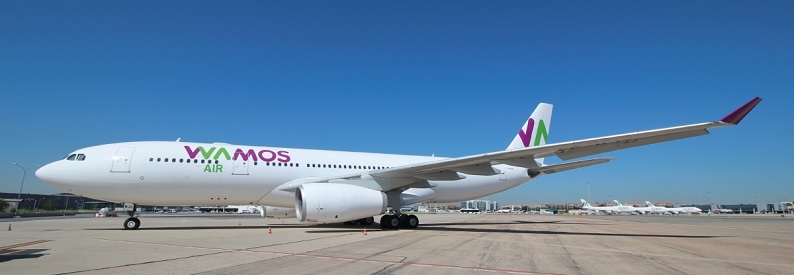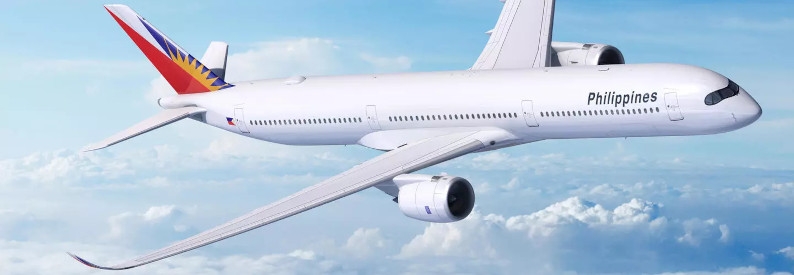No definite decision has been made on the future of privately-owned flag carrier, Philippine Airlines (PR, Manila Ninoy Aquino International), according to its parent company, PAL Holdings.
The company, in a disclosure to the Philippines Securities and Exchange Commission on November 25, 2020, responded to a request for clarification on an article in the Nikkei Asia which claimed the airline was poised to seek court protection for its debt restructuring.
"Please be informed that we sought clarification from Philippine Airlines (PAL) on the above-quoted article and were informed that there has been no definite decision on the matter. The instruction from the board is to continue to study the best options for the airline as of this time," PAL Holdings said.
“Philippine Airlines management and stakeholders continue to work on a comprehensive recovery and restructuring plan that will enable PAL to emerge financially stronger from the current global crisis,” the airline said in a statement. “We will make the necessary disclosures at the proper time, once details are finalised. In the meantime, we continue to gradually increase our flights operated on most of our international and domestic routes in line with market recovery.”
However, news reports said a proposed debt restructuring of PAL was likely to see it file for Chapter 11 bankruptcy protection as soon as United States courts approve the plan, expected as soon as next month.
“PAL will likely seek US court protection once it has 67% of its creditors or lessors agreeing to its request for restructuring,” an industry source familiar with the airline’s situation told the Inquirer. “This is to ensure that dissenting creditors follow and don’t throw off the restructuring plan. It’s the usual Chapter 11 filing done by US businesses to ensure business (continuity),” he added. “It will be filed in the US since 75% of creditors are based there and they have specific courts with knowledgeable judges on restructuring,” the source said.
PAL’s total liabilities, including its outstanding obligations to aircraft suppliers, stands at almost USD5 billion, making its proposed debt restructuring plan the largest in the Philippines’ history, the report said. However, the airline’s total liabilities were expected to fall to around USD3 billion once its rehabilitation plan was approved by US courts.
Nikkei Asia reported PAL’s restructuring plan involved returning 20 of its leased aircraft, cutting 2,700 jobs, and raising USD505 million for post-restructuring liquidity requirements. Of that total, USD255 million was expected to be raised by PAL’s controlling shareholder, business tycoon Lucio Tan, with USD250 million from government and private banks. These plans were reportedly disclosed by airline officials during an online meeting with employees and in a separate meeting with the Philippines Department of Finance (DoF). Management was looking to avoid a scenario in which an administrator would decide the airline's fate, employees were told. According to the ch-aviation fleets ownership module, PAL's fleet of 61 planes is made up of a mix of Airbus (AIB, Toulouse Blagnac) and Boeing (BOE, Washington National) aircraft. Of the 61, a total of 43 are leased namely two A320-200s, thirteen A321-200s, two A321-200NXs, fourteen A330-300s, six A350-900s, and six B777-300ERs.
The Lucio Tan group had already made a series of capital infusions to keep the airline afloat, including USD225 million in deposits for future stock subscription, USD122 million in advances in March 2020, and USD74 million in non-aviation asset sales.
The Philippine government has so far rejected direct corporate bailouts. The government would neither nationalise, nor help airlines without private sector contribution, Finance Secretary Carlos G. Dominguez III said recently. Dominguez III, who oversees state banks, said the DoF had been informed about PAL’s plans to seek court protection from creditors. “PAL informed the DoF of their plans last week but gave no details on the assistance they may need from us,” he told Nikkei Asia.
Meanwhile, BDO Capital Investment Corp president Eduardo Francisco said lenders would likely limit their exposure to PAL. “We would rather not lend to PAL, but to Lucio Tan Group. The money is more protected since they have other assets and cash flow.” He felt the Philippine government should ultimately act as PAL's “white knight”. Lenders could provide guarantees and loans subject to strict conditions, but the best scenario would be the partial nationalisation of PAL, he said.
PAL’s parent company, PAL Holdings, is part of a group of companies owned by Lucio Tan. ANA Holdings, the holding company of ANA - All Nippon Airways (NH, Tokyo Haneda), has a 9.5% stake in PAL Holdings.
According to the latest financial statement from PAL Holdings, the group has about PHP11.5 billion peso (USD238.9 million) in short-term unsecured loans from local banks and PHP35.66 billion (USD740.8 million) in long-term debt. PAL's key local creditors are BDO Unibank, Asia United Bank, China Bank, and the Philippine National Bank. The largest interest-bearing liabilities come from aircraft leases, amounting to PHP193.1 billion (USD4 billion) at the end of September. In total, PAL Holdings had PHP308 billion (USD6.3 billion) in liabilities at the end of September.
PAL Holdings recorded a net loss of PHP29 billion (USD602.3 million) from January to September, three times larger than the PHP8.4 billion (USD174.4 million) loss a year ago. During the same period, revenue shrank to PHP45 billion (USD934.6 million) from PHP118 billion (USD2.4 billion) due to widespread COVID-19 lockdowns. PAL Holdings also declared a PHP24 billion (USD498.4 million) capital shortfall as of end-September 2020.







